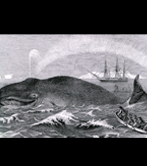16th century: Maritime economy: fishing, building and trade
This period was the start of major economic growth associated with the sea.
At the end of the fifteenth century, wool from Castile joined iron from the Basque Country as the main commodity carried on Gipuzkoan ships to Flanders and other northern ports.
The commercial presence of Gipuzkoa in Bruges was strengthened through the Casa de la Nación de Vizcaya, which represented Basque commercial interests.
Shipbuilding techniques evolved in line with the development of new sea routes. The abundance of estuaries and forests relatively close to the coast and a strategic position on trading routes allowed the development of shipyards.
Gipuzkoan boats competed with their Catalonian counterparts in the Mediterranean, traded with Europe and America, fished the northern seas and even sailed around the world.
Ship-owners, sailors, explorers, soldiers and fishermen. Many of the period’s famous names and important figures in connection with the sea were from Gipuzkoa: Okendo, Elcano, Urdaneta, Legazpi and many more.


